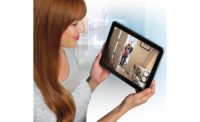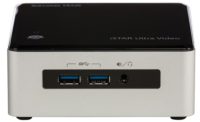
When you hear the term “edge device,” what comes to mind? While the concept — a device that’s installed at the end point (edge) of a video surveillance system — may be easy to grasp, specific edge devices and their associated functions are more difficult.
It seems there are as many opinions about what these encompass as there are products and technologies moving from the head-end out to the edge. And based on an industry temperature check, those technologies are incredibly diverse. On one hand, you may hear that an edge device is an IP camera or encoder that allows for additional functionality (analytics, pan-tilt-zoom, etc.) to be placed at the edge of the video system. On the other hand, you may hear that an edge device is something that allows for the installation of an IP network in a challenging situation. Or that an edge device absolutely needs to provide some sort of intelligent or analytic capabilities. Or that the term is all-encompassing and includes any device installed at the edge.
Confused yet? You’re not alone.
What’s clear, however, is that regardless of the specific capabilities, now is a good time for manufacturers and integrators to be living on the edge due to the higher level of performance that edge-based technologies provide.
THE BASICS
The experts interviewed here agree that edge devices have to, at the very least, provide additional functionality to the video system that goes beyond simply streaming live video and/or recording. And naturally, this additional functionality has to be provided at the edge.
“Image acquisition is the main function of cameras, but that traditional definition of a camera as an acquisition device is being changed by having intelligence, analytics and other capabilities included,” explained Miguel Lazatin, senior marketing manager, Sony Security Solutions Group, Park Ridge, N.J.
Perhaps not surprisingly, the most basic of all edge devices is also the most necessary piece in a video surveillance system: the camera. Many IP models include built-in video analytics or other intelligent capabilities, making them the truest edge device there is.
“Video analytics is something every edge device has to support,” believes Josee Desjeans, Nextiva intelligent edge devices product manager for Melville, N.Y.-based Verint.
Using analytics frees up operators from constantly monitoring video coming in from cameras. Analytics also alleviates the stress of having to make a decision whether to act or not based on that video. So from an efficiency standpoint, analytics make sense, says Steven Grein, director of product marketing, DVTel, Ridgefield Park, N.J.
“With analytics on the edge device, you can look for predetermined behaviors or suspicious activities with the ability to differentiate between multiple different behavior sets within the same device,” he says.
WHAT ABOUT ANALOG?
Installed between the IP network/power supply and the analog camera, an encoder translates an analog video signal to a digital signal that can then be transmitted across an IP network for use with networked systems, servers and software.
An encoder also allows analog cameras to perform additional functions, such as analytics. With the large number of analog cameras currently deployed, this ability is why Desjeans considers encoders to be the very definition of an edge device.
“Simply put, encoders make analog more intelligent,” she describes. “Intelligence adds value to the encoding, including a number of feature sets like PTZ support, access control or storage.”
THE BEST ‘EDGE’
There really is no perfect situation or location for edge devices. Because of their ability to bring additional intelligence to the video system, they can work well for small applications, large applications and everything in-between.
For example, Grein says, at an airport, there may be 12 to 15 different entities that are interested in the video system at any given time. Because of this, analytics are a key piece, without which those entities would miss a lot of information, which would, in turn, make the airport much less secure. The same can be said of utilities, he adds.
According to Lazatin, any kind of applications can use an edge device. However, in addition to airports, he points to city surveillance, banking and finance, education, healthcare, ports and railways as the markets that are best suited for edge devices.
While these large-scale situations where security is tight may be the obvious choices for edge devices, Grein says integrators and installers shouldn’t necessarily overlook the residential market.
“I’ve seen some really neat applications in homes,” he describes. “You could have a camera watching a pool, and if a child jumps or falls into the pool, or if more than one person enters the pool, you’ll know instantly.”
THE FALSE ALARM ISSUE
By providing a centralized solution for alarm management, Grein says, edge devices can also address the issue of false alarms. Using automated “if-then” intelligence (if X happens, then do Y) at the edge can decrease the frequency of false alarms — and the time it takes to address alarms in general — significantly.
For example, let’s say it takes an operator five to 10 minutes to analyze video and determine the appropriate response to the alarm. If he or she handles five alarms an hour, that’s 25 to 50 minutes spent just responding. Factor in the paperwork required by various municipalities and/or states, and the amount of lost time starts adding up quickly.
Automate a response based on analytics and operators can work more efficiently and save the client money. Not only are there methods for automating a response, but the paperwork can be either be completed automatically or routed to whoever is responsible for completing it — all with the touch of a button, Grein says.
T.J. Roe, S&S strategic manager at Garrettcom Inc., Fremont, Calif., has another view of edge devices. From his standpoint, an edge device is something that ensures the security of security devices themselves.
While tamper-proof technologies and the ability to remotely troubleshoot devices are becoming more standard, where Roe diverges from conventional wisdom is in the area of cyber security. As IP-based devices become more prevalent, Roe says this is a vital part of an edge device.
“In the past, it didn’t matter with the analog devices out there on the edge,” he says. “The beauty of IP is that you can take information and share it with anyone on the network or system. But if someone gets into your system, they can access all your data.”
TIPS FOR INSTALLATIONS
Fredrik Nilsson, general manager, Americas, for Axis Communications, Chelmsford, Mass., says the market is ripe for edge devices, but that installers and integrators may need to adjust their thinking in order to take advantage of the opportunities.
“A lot of integrators, out of habit, continue to design and build systems using the paradigm that they’ve always used,” he relates. “Maybe they haven’t thought about audio, the ability to speak live to the site, or the potential to save money on personnel.”
As for networking knowledge, Nilsson says the cliché of an installer as “a guy with two DVRs in the back of his truck” doesn’t do justice to the networking knowledge that most installers possess. Like most people, they have real-world knowledge of computers and networks from having them at home. What they lack in the way of networking or computing knowledge, they can usually learn through on-the-job training and experience. The exception, he adds, would be the need for proper training and certification before tackling a high-security, large-scale situation, such as airports.
However, Grein warns, anyone who’s expecting a perfect installation on their first try is in for a rude awakening.
“You have to do your homework, and that can be an intensive process,” he says. “If you’re not, then you’re doing a disservice to the customer, the manufacturer and yourself.”
If positioned and installed correctly, edge devices and their functionality can be positioned as money-makers rather than a liability to a company’s bottom line, Nilsson says. “An edge device adds functionality, but more importantly, it moves functionality from the central station to the edge — and that cuts the cost of the overall system,” he says.
Analog Compared with Edge
When it comes to choosing between a pure analog solution and an intelligent edge device, edge devices win, hands-down, says Fredrik Nilsson at Axis Communications.
Here are his reasons:
• Digital compression. Analog sends raw data over relatively expensive cable, only to be compressed by 95 percent on the receiving end. Edge devices perform this compression at the head-end and transmit over relatively inexpensive network cables.
• Intelligence. Edge devices allow video to be analyzed at the camera site for a variety of criteria, including facial recognition and object counting. This “more intelligent” video is then transferred to the monitoring center. Analog can’t perform this task.
• Auxiliary functions. An edge device allows you to incorporate audio, access control, passive IR sensors and more into a video surveillance system.
• Power over Ethernet. Edge devices allow cameras to receive power and transmit data and video over one cable. The potential cost savings, especially for a large enterprise, can be considerable.
• Local storage. For backup or for sites without enough bandwidth to transmit video over an existing IP network, storage on the edge can be very beneficial.
Green at the Edge
Without a doubt, “green” is a word that gets tossed around a lot, both in business and in everyday life. But for anyone who is serious about environmental issues, it’s much more than a buzzword.
Like many individuals and industries, the security market is growing increasingly more sensitive to the environment in recent years, says Josee Desjeans at Verint.
That’s why Verint, and several other manufacturers, offers environmentally friendly solutions, which in Verint’s case include edge devices.
“Power usage and cost can really add up, especially when you’re talking about a very large deployment,” she says. “If you can reduce that consumption, you’ll also reduce your total cost of ownership.”
In addition to offering Energy Star-certified devices that are environmentally friendly and energy-saving, Verint has taken its eco-friendly stance even farther by looking into a number of other areas, including how its products were being painted. In that instance, when the results that came back were less than desirable, Verint worked to change the process to make it less harmful to the environment.




